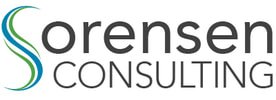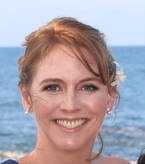|
I had the privilege of hearing <a href="http://www.thomaslfriedman.com">Thomas Friedman</a>, the three time Pulitzer Prize winner, speak this past weekend on his latest book <em>Hot, Flat, and Crowded: Why we need a green revolution and how it can renew America</em>. It is a follow on to his last bestseller <em>The World is Flat</em>, which describes a new era where, thanks in large part to innovative technologies such as the network, individuals have an opportunity to participate in the global economy and shape their opportunities like never before. But, as Friedman points out, this accelerated globalization is presenting us all with new challenges and opportunities that need to be met head on if we want to sustain our planet and way of life.
Take our rapidly growing population - the <a href="http://www.un.org/esa/population/unpop.htm">U.N.</a> predicts that in 2050 there will be 9.3 billion people, up from today's 6.8 billion, with the majority of that growth coming from the developing nations. All of whom are increasingly <a href="http://www.internetworldstats.com/stats.htm">connected</a>, thanks to the pervasiveness of the network and the increasing availability of cheap and powerful computing devices - think Internet-connected phones. And, in the best of circumstances, able to compete and improve their quality of life, so that it is comparable to those in the developed world (Friedman calls this "becoming Americans"). These forces are converging to place unprecendented strains on resources, stretching the natural capacity and limits of our planet. They are manifesting themselves in climate change issues and biodiversity depletion, as well as geopolitical problems (where those that control the energy supply have undue influence and those that do not have access to reliable energy are unduely cut out of the global conversation). To address these problems, many, including Friedman, call for an Energy Revolution. One that leverages clean energy systems to drive economic growth and sustainable living. The primary focus centers on the new energy technologies (ET) - wind, solar, wave - that will need to be refined or invented and then mass produced to reduce dependence on fossil fuels as an energy source. But just as important, will be the information and communications technologies that will combine with the ET to create more efficient and stable energy systems. (Note, Friedman touches on the role that information technology plays in his chapter The Energy Internet.) Because it's not about simply replacing one energy source with another, it's about ensuring the most efficient use of those precious reources. Predictions place demand for energy growing 1.6% a year on a global basis - some have today's demand <a href="http://www.itron.com/pages/solutions_detail.asp?id=itr_016422.xml">increasing by as much as 54 percent by 2025</a>. In the U.S. alone, electricity demand is expected to grow by 141,000 megawatts in the next decade, yet only 57,000 megawatts of new energy resources have been identified. So, in concert with making radical changes in our energy supplies, we need to be much smarter about how we consume those supplies to ensure we can sustain growth and opportunities for all. This is where Information and communications technologies (ICT) comes in. For example, the goal of an Internet-based "smart grid" is to do just that. Smart Grids grids are designed to modernize energy generation and distribution to make it more efficient and more reliable, feeding intelligence into the system, so that individuals, businesses, utilities, and governments can all make more informed consumption decisions (take a look at <a href="http://www.cisco.com/web/strategy/energy/smart_grid_solutions.html">Cisco</a> and <a href="http://www.silverspringnetworks.com">Silver Spring Networks</a> for some examples). With innovations in ICT a lot of things are possible to promote sustainability. Smart buildings, intelligent transport systems, water table management, and just-in-time supply chains, represent just a sampling of the current efficiencies enabled by ICT, leading to better resource management and significant potential carbon emissions reductions globally (See <a href="http://www.smart2020.org/">Smart2020Report</a>). Change needs to come if we are to sustain our planet and standard of living, and it will take innovations in both ET and ICT to make that change a reality.
0 Comments
Leave a Reply. |
Sorensen
|


 RSS Feed
RSS Feed